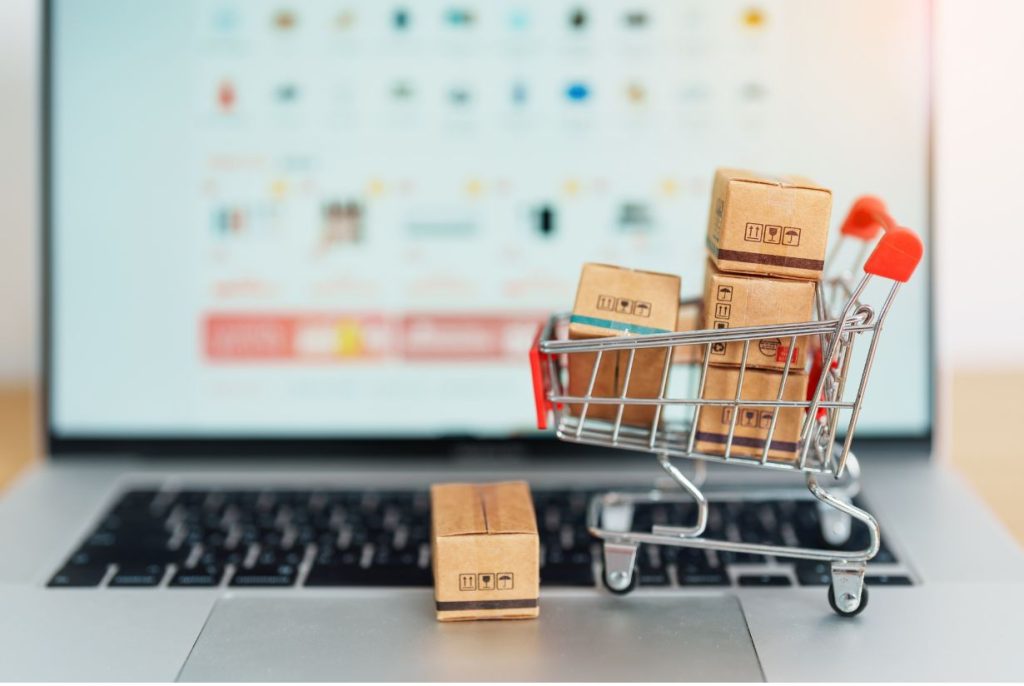A well-designed sales page is essential for converting visitors into buyers. In this tutorial, we’ll create a simple yet effective sales page using Canva, add a PayPal payment button, and make the page accessible online
Step 1: Plan Your Sales Page Content
Before designing the page, outline what sections to include. A good sales page typically has:
- Headline – A catchy title that grabs attention
- Subheadline – A short phrase explaining the eBook’s benefit
- eBook Cover Image – A professional mockup or preview
- Bullet Points – Key benefits of your eBook
- Testimonials (Optional) – Social proof from customers
- Price & Call-to-Action (CTA) – The PayPal “Buy Now” button
Step 2: Create Your Sales Page in Canva
Go to Canva and Log In
- If you don’t have an account, create a free one.
- Canva Pro users get more features, but the free version works well too.
Create a New Design
- Click “Create a Design” → Choose “Custom Size”.
- Set Width: 1080px, Height: 2000px (good for scrolling pages).
Add a Background
- Use a clean, white or light-colored background for readability.
- Optionally, add a gradient or soft pattern for a modern look.
Insert Your Headline
- Click “Text” → Add a bold, large font (e.g., “Get Your Copy of [eBook Title] Today!”).
- Use bright colors (e.g., black, blue, or red) to make it stand out.
Add the eBook Cover Image
- If you designed a new cover, upload it (Uploads → Drag Image to Page).
- Resize and center the image near the top.
Highlight Key Benefits
- Use bullet points to showcase what the buyer gets (e.g., “Learn how to XYZ in just 7 days!”).
- Keep the text short, 3-5 bullet points max.
Include Testimonials (Optional)
- If you have reviews, add them as speech bubbles or quote boxes.
- Example: “This eBook helped me launch my business in 30 days!” – [Customer Name]
Insert the Price & Call-to-Action (CTA)
- Use a bold text box to display the price (e.g., “Only $9.99!”).
- Below it, leave space for the PayPal button (we’ll add this later).
Download the Sales Page
- Click “Share” → “Download” → Choose PNG or JPG.
- Save the file to your computer.
Step 3: Upload Your Sales Page Online
You need to host the sales page online so visitors can access it. Here are three free options:
Option 1: Upload to Canva & Share the Link (Easiest)
- In Canva, click “Share” → “More” → “Website”.
- Choose “Presentation” or “Scrolling”.
- Click “Open Website” → Copy the URL.
- Share this link with buyers.
Option 2: Use Google Sites (Free Website Builder)
- Go to Google Sites → Click “Blank”.
- Insert your Canva sales page image.
- Add a PayPal button (next step).
- Publish the site (you get a free URL).
Option 3: Upload to WordPress (For More Control)
- Create a new WordPress page.
- Upload your Canva sales page image.
- Add the PayPal button.
- Publish the page.
Step 4: Add a PayPal Buy Button
To accept payments, you need to generate a PayPal “Buy Now” button and add it to your sales page.
Create the PayPal Button:
- Go to PayPal Buttons.
- Select “Buy Now”.
- Enter:
- Item Name (e.g., “PLR eBook – [Title]”)
- Price (e.g., $9.99)
- Currency (e.g., USD)
- Payment Type (choose “Digital Product”)
- Click the Create Button → Copy the HTML Code.
Step 5: Embed the PayPal Button on Your Sales Page
Depending on where you uploaded your sales page, here’s how to add the PayPal button:
Option 1: Google Sites
- Click “Embed” → Select “Embed Code”.
- Paste the PayPal button HTML.
- Resize & position it below the price.
Option 2: WordPress
- Edit your sales page post.
- Click “Custom HTML” in the editor.
- Paste the PayPal button code.
- Update & publish the page.
Option 3: Canva (With Third-Party Link)
Canva does not support direct HTML embedding, but you can:
- Create a “Buy Now” button using a colored shape & text.
- Link the button to your PayPal payment link (PayPal gives this after creating the button).
- When clicked, users are redirected to PayPal for checkout.
Step 6: Deliver the eBook Automatically After Payment
Once the buyer pays, they need to receive the eBook. Here’s how:
Option 1: PayPal Automatic Redirect
- In PayPal Button settings, find “Take customers to this URL after checkout”.
- Enter a link to your eBook:
- Google Drive/Dropbox Link (Upload your eBook & get a shareable link).
- A “Thank You” Page on Google Sites or WordPress, with a download button.
- Save and update the button.
Option 2: Use SendOwl or Gumroad (Automated Delivery)
If you want automatic delivery, platforms like SendOwl or Gumroad can handle sales + file delivery for a small fee.
Step 7: Promote Your Sales Page
Now that your sales page is live, promote it:
- Share on Facebook, Instagram, Twitter, LinkedIn, or TikTok
- Post in Facebook Groups (related to your niche)
- Run Pinterest Pins linking to the sales page
- Use SEO-friendly keywords to rank your page on Google
Final Thoughts
Congratulations! You’ve successfully:
- Designed a professional sales page in Canva
- Uploaded it online for free
- Added a PayPal button for sales
- Set up automatic eBook delivery
Now, you can sell your PLR eBook 24/7!
© 2025, Digital Content Mix. All rights reserved.




